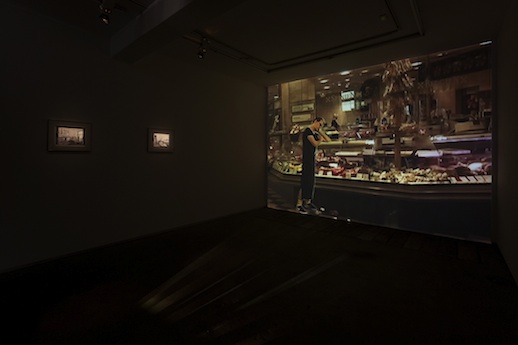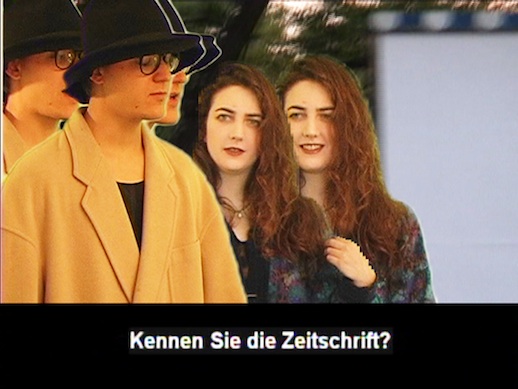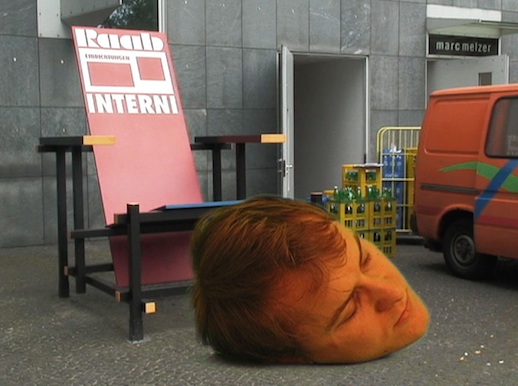Farewell to ‘The City’
Over a montage of miscellaneous city-life scenes, the opening segment of Woody Allen’s 1979 movie “Manhattan” describes the relationship between its protagonist and the eponymous location as “romanticised all out of proportion”. Shot in black-and-white to the blue-note jazz of George Gershwin, this is New York as our collective imagination might have it fixed forever. An accumulation of clichés which together depict not only a rich drama of dusty bustle and bright-lights, but the 20th century urban ideal: A site with a self-contained soul.
Just how this very sequence of film has found its way to Tokyo — beside handycam shots of contemporary Berlin — is amongst the first questions presented by Ken Okiishi’s feature-length video “(Goodbye To) Manhattan”, now showing at Take Ninagawa. Filmed between 2006 and 2009, the piece samples the scenes and scripting of Allen’s metropolitan classic, loosely reenacting them in the German capital where Okiishi (also a resident of New York) splits half of his working life. Yet the film is not quite the tale of two cities its premise might suggest. And as the disjointed narrative progresses, one comes to realise that both locations stand not for themselves, but for two opposing ideas of urbanity. A dialectic around which we can read the entire film as structured.

So what then are these two dialectical ‘ideas’? As for the first, I have already suggested how in the Manhattan portrayed by Woody Allen, we can identify one particular urban archetype. There the city functions as a totality, a self-contained whole illustrated within a district which is itself a de facto island. By contrast, the account of modern-day Berlin which Okiishi provides is of a vaguely defined arena of trans-Atlantic exchange. A space inhabited by part-time cultural migrants who, not unlike the artist himself, are fashionably caricatured as an upwardly mobile artistic elite.

Having laid out these two oppositional terms, Okiishi deploys a number of ingenious tropes to map them against one another. In the work’s central motif for instance, we see the artist’s friends recite passages lifted from the “Manhattan” script. Yet rather than recreate the too-slick dialogues of Allen’s original writing, each collaborator is filmed in isolation reading their lines as if talking to themselves. Their words garbled by back and forth German translation, all that remains is the Pidgin English we recognise today as the emergent lingua franca of globalisation. And although Okiishi’s awkward monologues are seen to take place in Berlin, they actually unfold over the universal non-context of a green screen. The presence of which is continually revealed by the artist’s consciously low-fi editing technique. A reminder that this could be anywhere.

Oscillating between these two conceptions, Okiishi brings the enduring mythology of ‘the city’ into conflict with our glorification of globalised life. So that where “Manhattan” is used to signify the (perhaps outmoded) notion of a geographically fixed urban identity, the overlays and impositions of another place and its language act on behalf of the shifting, de-centered lifestyles toward which contemporary culture is increasingly inclined. Fortunately for the piece, Okiishi elevates neither notion as ideal: electing instead to provide a skeptical, sideways account of international exchange.
In the film’s itinerant world of fluid and arbitrary cities, just why we are seeing this work in Japan is a question that never gets answered.
Barnaby Lambert
Barnaby Lambert



